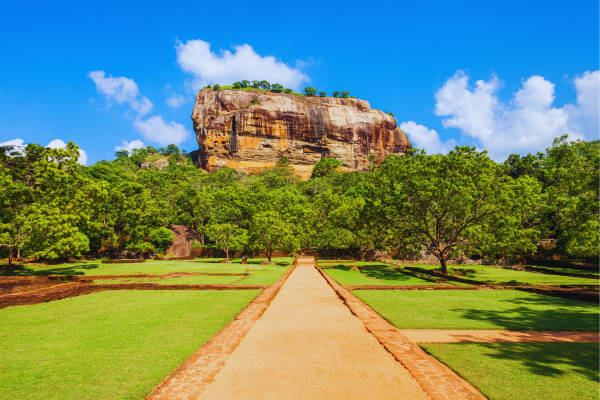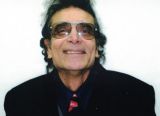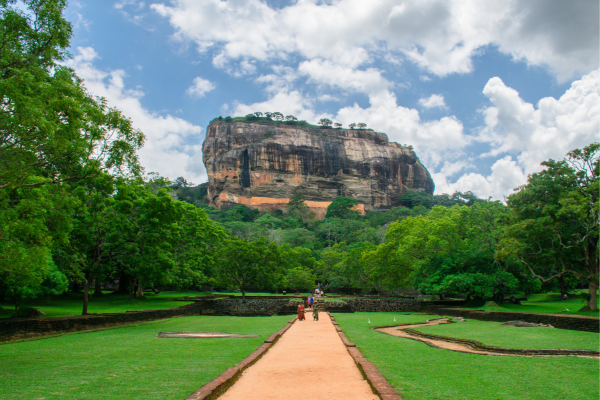THE SIGIRIYA SAGA – THE AFTERMATH – by Bernard VanCuylenburg

 A poet, writing in the glory days of the Moghul empire in India referred to the Taj Mahal as “..a teardrop on the face of India…” I would go a step further and say that Sigiriya is more than a teardrop. Long after the tears have been shed, it remains a lingering heartache in the psyche and spirit of Sri Lanka and an archaeological treasure where the full gamut of human emotions – anger, hatred, revenge, greed, murder, and lust for power, have been played out to the maximum. The events that unfolded on that fateful day over 1600 years ago still resonate today, which is why Sigiriya is perhaps the most visited historic site in the island. The protagonists in this drama, King Dhatusena, Prince Kasyappa, Prince Moggallana, and the commander of the army Migara ,who was King Dhatusena’s son-in-law are names that will live down the ages, long after we are no more. Future generations will be drawn to Sigiriya just as we are today, and will have more to learn and gaze in wonder because there is more for the archaeologists spade to reveal.
A poet, writing in the glory days of the Moghul empire in India referred to the Taj Mahal as “..a teardrop on the face of India…” I would go a step further and say that Sigiriya is more than a teardrop. Long after the tears have been shed, it remains a lingering heartache in the psyche and spirit of Sri Lanka and an archaeological treasure where the full gamut of human emotions – anger, hatred, revenge, greed, murder, and lust for power, have been played out to the maximum. The events that unfolded on that fateful day over 1600 years ago still resonate today, which is why Sigiriya is perhaps the most visited historic site in the island. The protagonists in this drama, King Dhatusena, Prince Kasyappa, Prince Moggallana, and the commander of the army Migara ,who was King Dhatusena’s son-in-law are names that will live down the ages, long after we are no more. Future generations will be drawn to Sigiriya just as we are today, and will have more to learn and gaze in wonder because there is more for the archaeologists spade to reveal.
One of my prized books is a publication by Professor Senaka Bandaranayake titled SIGIRIYA. Apart from the information contained therein, this book has the best pictures of Sigiriya I have ever seen. The photographs shot from various angles are so graphic and realistic, that it gives one the impression of actually being in the palace complex ! If photography was around in King Kasyappa’s day, then the photographer who took these pictures would have been the Kings favourite !
Professor Senaka Bandaranayake describes in detail the area known in ancient times as the “Sinhagiri Bim”. Today it is referred to as the Sigiri Territory or the Sigiri Hinterland. In archaeological terms this area is virtually a pot of gold at the end of the rainbow, with the promise of greater discoveries in future. Archaeological excavations have shown the “Sinhagiri Bim” to consist of many ancient village settlements, tanks, cemeteries, and even an iron producing centre, and some Buddhist monasteries. What a treasure trove awaits archaeologists and students of history in future.
About 200 years after Kasyappa’s death, an ancient Sinhalese document titled “The Sihigiri Vitara”was discovered in the
Maharajah’s palace in the Kingdom of Suvarnapura (Palembang) on the island of Java. Some Historians are of the opinion that this tract was written during the reign of King Agrabodhi the 2nd (618 AD – 618 AD) who was a direct descendant of King Kasyappa the 1st.( 473 AD – 491 AD). Ananda-Sthavira, a learned monk who lived in Palembang translated this document into Sanskrit. He visited Lanka when King Parakramabahu the VI ruled Lanka from the Kotte Kingdom (1412 -1467) and he brought this manuscript with him. Since the Sihigiri Vitara contained more information about Sigiriya and the rule of King Kasyappa,the King was deeply impressed by the erudition of Ananda-Sthavira who was a great Archaeologist and Historian, and was also fluent in Pali, Sanskrit and Sinhalese, gave him full liberty to visit any part of the country to improve his archaeological and historical studies.during his stay in ancient Lanka. The learned Monk took full advantage of this golden opportunity with the result that the information he found during his research proved to be so valuable that apart from being recorded on ola leaves, it was also indited on stone for future generations. The information which Ananda
Sthavira’s discovered was more detailed than the chapter on Sigiriya chronicled in The Culavamsa. Meanwhile, Ananda Sthavira became a favourit ef the King and was given the green light not afforded to many. He became an important personage in the royal court and as will be seen later, this did not augur well with some of the senior courtiers who felt they were being sidelined in matters of royal protocol. Ananda Sthavira’s research and writings of Sigiriya are slightly different to the Sigiriya story we are familiar with, but the essence of the story is true. Here are a few examples of the information in the Sihigiri Vitara :

He mentions that the architect whom King Kasyappa employed to execute his plans for the royal city and palace complex was SENA LA – To the best of my knowledge, this is the first time that the name of a Sinhalese Architect has been recorded for posterity. It also mentions the Commander of the Garrison at Sigiriya. He was GENERAL SULAKSMANA.
- The “Sigiri Viitara” further records that Prince Moggallana married King Kasyappa’s widow. The result of this marriage was that King Kasyappa’s only son in total opposition to the palace coup fled to India where he died in exile. By the palace coup, I am referring to the coup initiated by his Father Prince Kasyappa, which resulted in the barbaric murder of his Grandfather the much loved King Dhatusena. The Culavamsa mentions the two daughters of King Kasyappa, but there is no mention of a son.
- There was a theater where many plays were performed during King Kasyappa’s reign.
- The “Sigiri Vitara” states that the entire Sigiriya project took only seven years to complete. If this is true, there are some who hold the opinion that this is an architectural and engineering miracle. Many of his discoveries were indited on stone. But his enemies had their revenge after his death when the green eyed monster jealously, raised its ugly head. Many of these stone inscriptions were vandalized and priceless information was lost forever.
A reader once asked me if there was any other archaeological monument in the world that can be compared to Sigiriya. All I could do by way of an answer was to write about my own travel experiences. If one talks about “heights of lofty grandeur”, then I can think of only three other archaeological sites in the world which rank with Sigiriya.
- THE PALACE OF KING HEROD IN MASADA ISRAEL.
The Palace/Fortress of Masada in the wilderness of the Judean desert by the Dead Sea in Israel, was built by King Herod the Great, King of the Roman province of Judaea between 37BC – 4 AD. It is an example of brilliant architectural design and engineering carried out in extreme weather conditions in scorching heat on the Eastern edge of the Judaean desert overlooking the Dead sea. Nature of course did not favour King Herod because the Judaean Desert is a dry barren wilderness unlike Sigiriya which is located in lush beautiful landscaped gardens complete with running water and swimming pools. To the credit of King Herod’s engineers, despite the drought and hostile climater, they managed to install a water system which provided hot water to the palace on the summit during the Winter.
- THE HANGING TEMPLE IN WUTAISHAN IN SANXI PROVINCE CHINA.
The Hanging Monastery in Wutaishan China, was built on the Western cliff face of Hengshan mountain in Jinxia Gorge by a Monk named Liao Ran during the Wei dynasty 1500 years ago, sometime between the years 386 – 534 AD. The entire monastery is a wooden frame structure . It was built by inserting holes in the hillside and inserting beams into the holes up to 7 – 10 ft. deep. These beams support the entire structure which today literally hangs on the cliff face with the supporting beams. The full scope of this engineering miracle can be appreciated by those who dare climb to the Monastery – and I dared ! Sigiriya had a palace and living rooms for the nobility, including a swimming pool on the summit of the rock. Contrast this to the Hanging Monastery in Wutaishan which was not built on a summit, but was built hanging onto the side of a steep cliff ! The Hanging Temple today is an incredible feat of engineering and is sadly one of the world’s forgotten wonders.
Another reader once asked me if Sigiriya can be compared to Macchu Picchu, the Inca capital in Peru. My answer is a definite “NO”. King Kasyappa built his Royal Palace and living quarters on the SUMMIT of Sigiriya rock, together with quarters for the nobility, which also had a swimming pool. The city was at the foot of the rock, complete with landscaped gardens, which gave Sigiriya the reputation as being one of the most beautiful garden cities in the world during the 5th century AD.
MACCHU PICCHU ON THE OTHER HAND IS AN ENTIRE CITY BUILT BY THE INCA EMPEROR TUPAC INCA IN THE 15TH CENTURY ON THE NARROW RIDGE OF A MOUNTAIN TOP AT 8000 ft. THE CITY HAS A RESIDENTIAL CENTER, AN INDUSTRIAL CENTER, AGRICULTURAL TERRACES COMPRISING FIELDS FOR PLANTING A VARIETY OF FRUITS AND CROPS FOR THE SUSTENANCE OF THE CITY, FOUNTAINS, CEREMONIAL BATHS,TEMPLES, RESIDENCES FOR THE PRIESTS, RUNNING WATER BY AN EXCELLENT NETWORK OF CHANNELS FOR IRRIGATING THE CROPS PLANTED ON AGRICULTURAL TERRACES. AND AN EXCELLENT AQUEDUCT SYSTEM WHICH PROVIDED WATER FOR IRRIGATION AND DOMESTIC USE AND OF COURSE FOR THE EMPEROR’S PALACE AND THE LIVING QUARTERS FOR THE NOBILITY. AT ITS PEAK MACCHU PICCHU WAS THOUGHT TO HAVE OVER 500 INHABITANTS.
IT IS AN ENGINEERING MARVEL AND THE INCA WALLS HAVE POLISHED STONES FITTED TO STONE WITH NO MORTAR IN BETWEEN. THIS CITY ATOP A MOUNTAIN TOOK 50 YEARS TO BUILD EMPLOYING THOUSANDS OF LABOURERS. AND ANOTHER ASTONISHING FACT – THIS SUPERHUMAN TASK – AN ENTIRE CITY ON THE TOP OF A MOUNTAIN RIDGE WAS ACCOMPLISHED BY THE INCAS WHO HAD NO KNOWLEDGE OF THE WHEEL, WHICH WAS INTRODUCED TO PERU BY THE INVADING SPANIARDS AT A TIME WHICH HISTORY REFERS TO AS “THE SPANISH CONQUEST”. WHILE THE REST OF PERU WAS CONQUERED BY THE SPANISH, THE CITY OF MACCHU PICCHU HIGH ON ITS MOUNTAIN PEAK SOMETIMES SHROUDED IN MIST, WAS NEVER DISCOVERED BY THE INVADING SPANIARDS. BUT IN TIME.SUSTAINING THIS MOUNTAIN TOP EYRIE WITHOUT AN EMPIRE PROVED IMPOSSIBLE. ITS OCCUPANTS INEVITABLY MELTED AWAY INTO THE JUNGLE WHICH CONCEALED MACCHU PICCHU FROM OUTSIDERS EYES FOR THE NEXT 400 YEARS, UNTIL IT WAS DISCOVERED BY HIRAM BINGHAM IN 1911. .
I spent a day in Macchu Picchu exploring this legendary site, which today is unique because Archaeologists are of the opinion that with all the technology of the modern world, another city like Macchu Picchu cannot be built today high on a mountain. It is a feat beyond human accomplishment ! Sigiriya compared to Macchu Picchu, is smaller in scope and scale.
Over 2000 years ago a despotic ruler King Herod of the Roman province of Judaea built his Winter palace on the summit of Masada. An aerial view of this monument from some angles is similar to the palace of King Kasyappa on Sigiriya Rock. But there were political differences between these two figures in History. King Herod, although he had the title of “King” was actually a vassal of the Roman Empire who had colonized Palestine. He was answerable to the Roman Emperor at the time
and perhaps that is why he ruled the province of Judaea with an iron fist. Conversely, King Kasyappa was the King of a country and was not answerable to anybody except of course his subjects. Anybody contemplating Sigiriya Rock as it stands alone cannot fail to get the message that it embodies the founder himself, and his secular power. It serves as a polychrome political poster and a sacrosanct icon of Sinhala civilisation . When one considers the vision and tenacity of purpose of King Kasyappa, his sheer will power draws admiration. Here was a young King who threw an army of engineers, architects, artisans, artists, craftsmen, workmen, surveyors and draughtsmen at a stupendous rock of granite, possibly despite much opposition – and created a fairy tale palace in the sky at which the world holds its breath in amazement today.
A solitary Monk Liao Ren in far away China, perhaps inspired by religious fervour decided to build a monastery not on terra firma, but hanging on to the face of a cliff ! He accomplished this seeming impossible feat somewhere around the year 410 AD.
Like Macchu Picchu which was lost to the world for 400 years, Sigiriya too following the death of King Kasyappa after which KIng Moggallana shifted the capital once again to Anuradhapura had her dark night of the soul when she vanished from history’s stage, until the lost city was discovered by a British Surveyor Major Forbes in 1853.
On a visit to Sigiriya several years ago, I recall walking around the gardens very late in the evening almost when darkness was falling. In the silence I experienced almost a spiritual bewitchment as the Sigiriya story played out in my mind and I wished I could travel back in time and visit this citadel in the sky in her days of splendour. For the present I shall remember her as she is, forever held in her magic spell.
Bernard VanCuylenburg.







